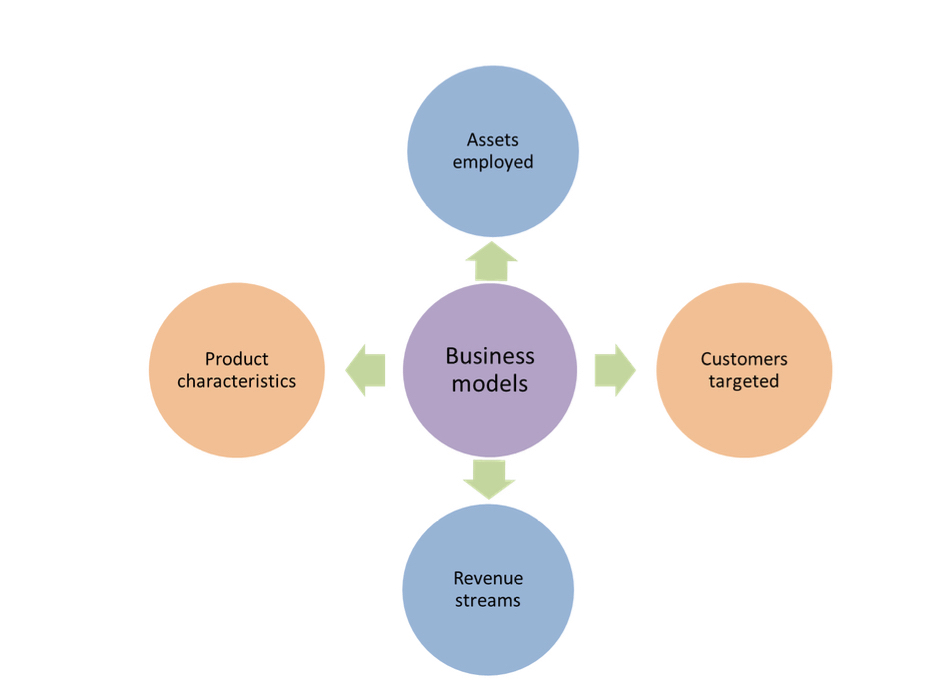FSR Topic of the Month
New business models in a changing industry
Decarbonisation and digitalisation are changing the way value is created, delivered and captured in the electricity sector. On the one hand, new physical assets are being deployed to generate electricity without emitting CO2 and other greenhouse gasses; on the other hand, digital technologies are being adopted to develop innovative services and offer them to targeted customers. In the 1980s and 1990s, the development of combined cycle gas turbines (CCGT) and the public decision to introduce competition and dismantle the vertically integrated electric utilities shook the industry and led to the emergence of independent power producers and retailers, unbundled transmission system operators, merchant interconnectors, and the like. Today, the increasing deployment of renewable energy sources and the progressive digitalisation of the supply chain are leading, again, to the appearance of new business models with important implications for the individual companies and for the electricity sector as a whole. The most relevant include:
-
- 1. Greening of generation;
-
- 2. Digitalisation of retail-size customers.
To better appreciate the novelties and their implications for the organisation of the sector and its efficient regulation, it is important to identify the core building blocks of the new business models and the way they depart from those that emerged during the restructuring of the industry 20 or 30 years ago.
Before doing that, we need to clarify the words we employ. A business model is an expression frequently used by scholars and non-expert alike, sometimes with different meanings and for different purposes. Several definitions exist (Zott et al., 2011; DaSilva and Trkman, 2014; Wirtz et al., 2016). One of them has been provided by Osterwalder and Pigneur in a repeatedly quoted book issued in 2010 [1]. It states that a business model represents “the rationale of how an organisation creates, delivers, and captures value” and it identifies nine components to fully characterise it: customer segments, value propositions, channels, customer relationships, revenue streams, key resources, key activities, key partnerships, and cost structure. Together, they form the so-called “business model canvas”, a flexible tool particularly useful for entrepreneurs and managers tasked with the elaboration of new models, but also valuable for researchers interested in understanding what firms do or try to do in order to make a profit.
However, since we aim here only to grasp the fundamental trends and the implications for the organisation and regulation of the electricity sector, it is not necessary to provide a thorough description of all the nine building blocks of any particular business model. Indeed, the observation of everyday business news and a quick overview of the existing scientific literature suggest that four basic business model components, gathered in two pairs, are sufficient to identify the chief drivers of the new business models in electricity and understand what they mean for public policies and regulation.
As we will see in this Topic of the Month, the new assets employed and the special revenue streams to be secured are key for the greening of generation, while specific product characteristics and the particular customers targeted are fundamental ingredients to the digitalisation of retail-size customers (Figure 1).

Fig. 1: Two pairs of business model components to understand the main novelties.
Between the greening of generation and the digitalisation of retail-size customers, there are electricity grids – both transmission and distribution. They stand in the middle not just in a physical sense, but also because their business is directly affected by what is happening upstream and downstream. Grid companies are regulated businesses used to connect customers by investing in long-lived physical assets and are remunerated mainly via volumetric network tariffs. They now have to support the transition to a decarbonised energy system and the activation of smaller customers. All of this represents a challenge, but possibly also an opportunity. A challenge and/or an opportunity that might require them to shift from a business model based on assets and revenues to a business model centred on product characteristics and targeted customers.
In this Topic of the Month, we will first zoom in on the two novelties represented by the greening of generation and the digitalisation of retail-size customers. We will show how the pairs assets-revenues and characteristics-customers are able to explain the specificities of those new business models and the way they work. We will then turn our attention to the grids, whose business is heavily impacted, and we will investigate the constraints and the options that they face in adapting to the new business landscape.
[1] Osterwalder, A., Pigneur, Y., 2010, Business Model Generation: A Handbook for Visionaries, Game Changers, and Challengers, John Wiley and Sons, New York.






